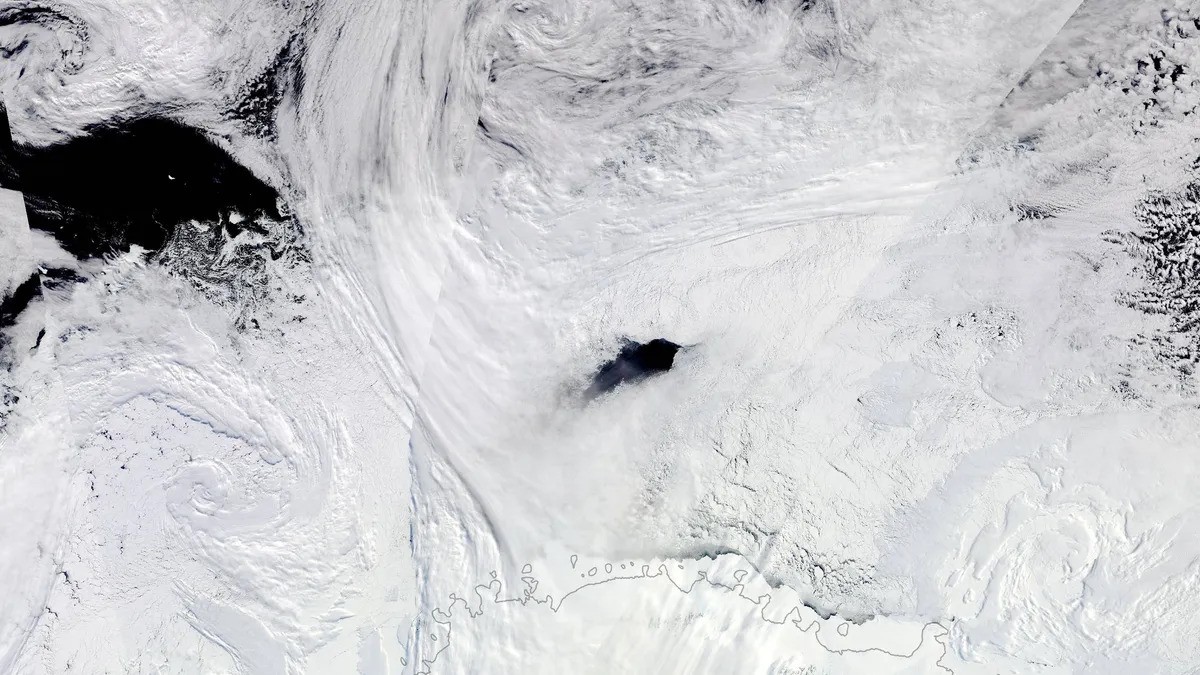Scientists were able to explain how in 2016-2017 a giant hole in the ice formed in the Weddell Sea off the coast of Antarctica, which was clearly visible from satellites. The reason for its formation was a combination of the bottom relief, currents and salinity of the water.

Hole in the ice
Every year, when summer begins in the Northern hemisphere of the Earth, Antarctica freezes on the contrary. Ice fields begin to grow in the seas that surround it. Imagine the surprise of scientists when, in the winter of 2016-2017, a hole filled with water did not form in one of them, located in the Weddell Sea, which was clearly seen by satellites even at very high orbits. It was larger than Switzerland.
The hole did not close for several months and several years later, satellites saw traces of it. Scientists compared its position with the topography of the seabed and named it the “Maud Rise polynya” in honor of the huge underwater plateau located directly below it.
The most interesting thing about this hole is that it is not the first time it has appeared. It was recorded on satellite images from 1974 to 1976. However, since then and until the mid-2010s, it was not observed, although scientists are sure that it is not an accident, but a manifestation of a systematic phenomenon.
How does a huge ice hole appear?
In fact, the main reason for the appearance of a giant hole in the ice in the Weddell Sea is not so mysterious. This is exactly the Maud Rise under it. Under the ice of the Antarctic seas, there are currents of warmer and saltier water than is usually present in it.
And when their circulation develops in a certain way, the underwater plateau pushes all this water up, and it melts the ice above. However, scientists have established some time ago that this process could not provide the consequences that are being observed. Because the meltwater will be very fresh and cold, which means that everything should freeze again very quickly.
This is exactly the problem that scientists from the University of Gothenburg in Sweden have solved. They suggested that there must be some other mechanism for the formation of polynya. The analysis of satellite images, data from autonomous research vehicles and even trackers on marine animals came to the rescue.
Thanks to all this, scientists have established that the hole in the ice is formed by a process known as Ekman transport. It consists in the fact that when the wind blows over the surface of the water and there is friction between it and the currents, an additional movement of water occurs, directed at right angles to the direction of the wind. It provides an additional transfer of salt in the water, which does not allow it to freeze.
According to www.space.com
Follow us on Twitter to get the most interesting space news in time
https://twitter.com/ust_magazine


